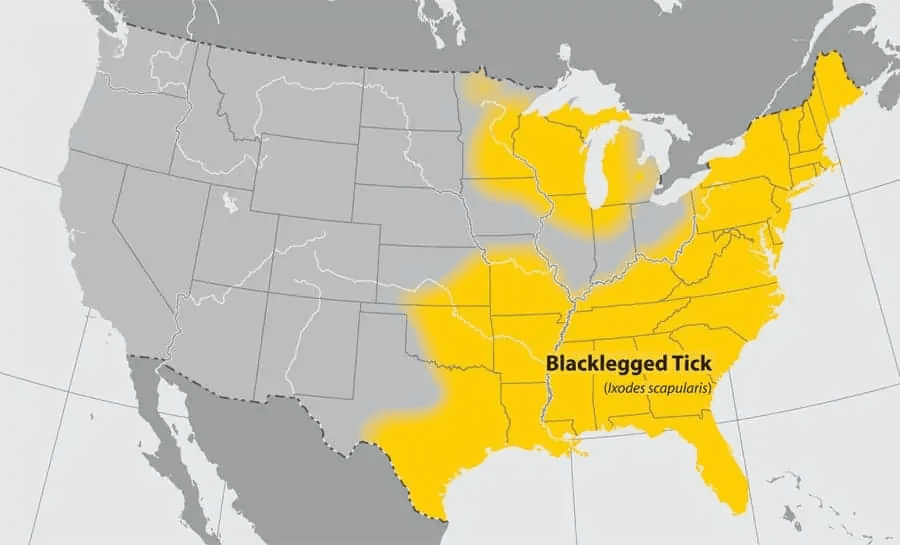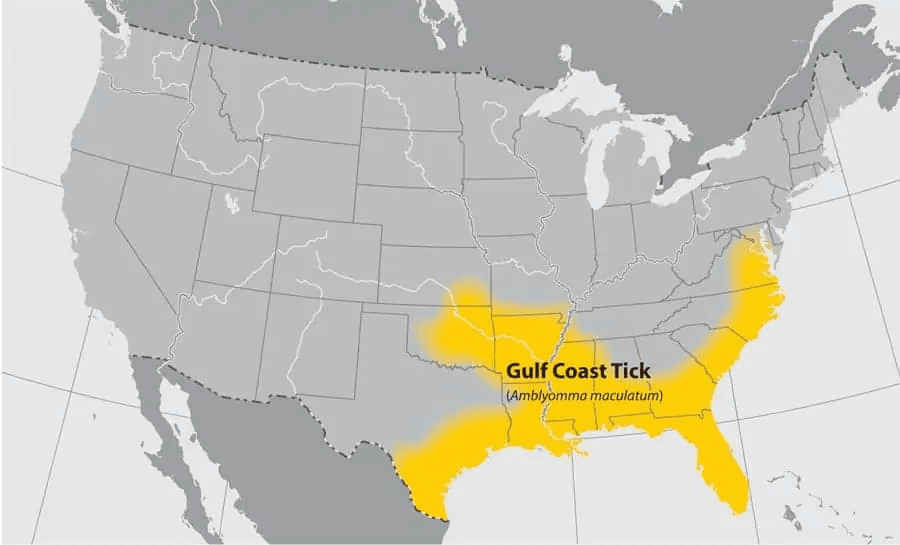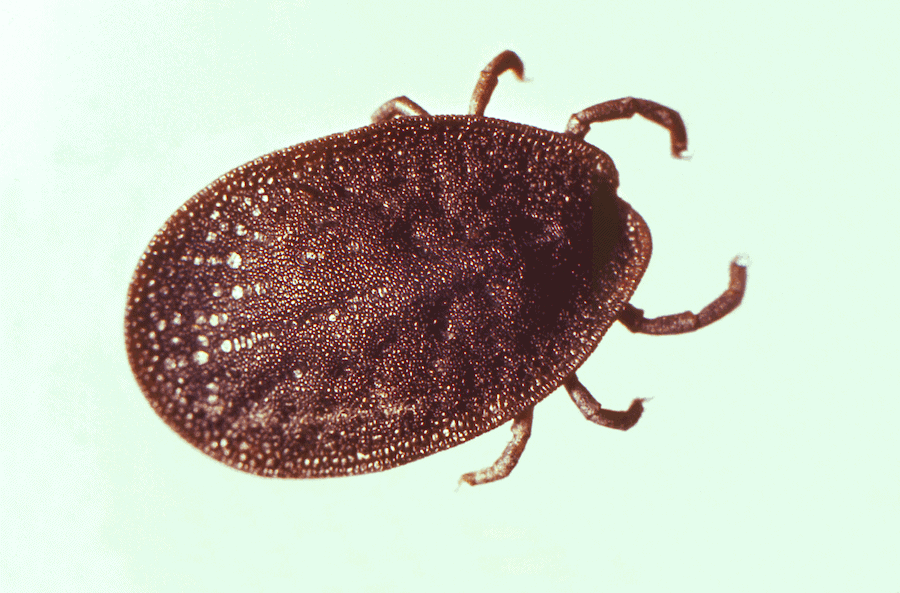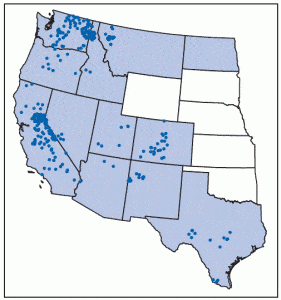Ticks come in many different varieties that not only look different, but also live in different regions and environments, and can transmit different types of diseases to both people and animals.
The purpose of this article is to provide some basic information about different types of ticks, as well as key details about the various species that you are most likely to encounter in different regions of the United States. If you suspect that you or a loved one has been bitten by a tick of any kind, try to keep it as intact as possible so you can have it tested. Place it in a secure container so it can be evaluated by your healthcare provider, veterinarian, or local vector control for identification.
What Are Ticks?
Ticks belong to a group of animals called arthropods. Like spiders, they fall under the classification of arachnids—a specific type of arthropod with eight legs. Unlike spiders, however, ticks feed on blood from mammals—including people, pets and livestock—as well as birds, reptiles, and amphibians. They have been reported in rural and urban environments around the world, but are most often found in grassy or wooded areas and are typically most active from spring through fall.
In general, ticks can be divided into two main families: hard ticks (Ixodidae) and soft ticks (Argasidae).
HARD TICKS (IXODIDAE) Hard ticks all share the distinguishing trait of a hard outer shield or black plate, known as a scutum.
SOFT TICKS (ARGASIDAE) Soft ticks do not have a scutum but instead have more rounded bodies.
Both of these families of ticks have species that can transmit diseases to humans; however, the typical length of time required to do so differs just like their feeding habits. Certain hard ticks that carry Lyme disease, for example, typically must be attached for 36 to 48 hours to infect a host, according to the Centers for Disease Control (CDC). Certain soft ticks that transmit Tick-Borne Relapsing Fever (TBRF), however, feed very quickly and can cause disease in humans in as few as 15 minutes.

Image Source: https://phil.cdc.gov/Details.aspx?pid=5993
What is the Typical Lifecycle of a Tick?
Ticks generally have four stages of life: egg, larvae, nymph and adult.
Eggs, which can number into the thousands, are laid by the female tick. These eggs hatch into larvae, which are also known as “seed ticks.” The larvae typically attach to smaller animals, such as mice and birds.
After several days of feeding, the larvae develop into nymphs, which can then attach to larger hosts and then ultimately turn into adult ticks. Most tick-borne diseases are transmitted by nymphs, which are so small that hosts often don’t see them.
Ticks advance through each of these stages by molting, a process during which they shed their outer skin.
How Many Legs Does a Tick Have?
If you’re trying to identify a tick, determining the number of legs may be helpful. As arachnids who are closely related to spiders and mites, ticks have eight legs. Larval ticks, however, only have six. This is consistent through all types of ticks.

Image Source: Dr. Christopher Paddock https://phil.cdc.gov/Details.aspx?pid=10879
What to Do After a Tick Bite?
How to Treat a Tick Bite?
Tick bites are an unfortunate occurrence since, once you’ve been bitten, any potential pathogens have already been transmitted. However, in addition to removing all ticks, saving them for testing, and watching carefully for symptoms of tick-borne diseases, you can perform basic first aid on the bite. Wash the bite site with warm water and soap, rubbing alcohol, or an iodine scrub. You can also watch the site carefully for any rashes, but remember that rash is only a symptom of some tick-borne diseases, and it doesn’t always occur. Even with Lyme disease, the bull’s eye rash only shows up in some patients.
What Types of Ticks Transmit Diseases to Humans?
Of the nearly 900 species of ticks that exist in the world, only a select number bite and transmit disease to humans within the United States. The following descriptions provide key facts about each of these different types of ticks, including what each tick looks like at various stages of the lifecycle, some distinguishing characteristics, regions where they’re typically found, and what types of ticks carry Lyme disease and other illnesses that can infect both people and pets.
AMERICAN DOG TICK (Dermacentor variabilis)

Distinguishing Characteristics of the American Dog Tick:
Sometimes called wood ticks, American dog ticks are a type of hard tick that is most often found in tall grass, as well as low-lying brush and twigs. At both adult and nymph stages, these types of ticks can feed on a variety of mammals, but adult females are most likely to bite humans. The adult females are most easily identified by the large, off-white scutum that starkly contrasts with the rest of their dark-brown bodies.
Diseases Transmitted by the American Dog Tick:
Both nymphs and adults can transmit Rickettsia rickettsia, which causes Rocky Mountain Spotted Fever, and the bacteria that causes Tularemia.
Where the American Dog Tick is Found in the U.S.:
American dog ticks are primarily found east of the Rocky Mountains, although they can also be found in certain areas along the Pacific Coast.

EASTERN BLACKLEGGED TICK/DEER TICK (Ixodes scapularis)

Distinguishing Characteristics of the Eastern Blacklegged Tick:
Unfed female Eastern blacklegged ticks, also known as deer ticks, are easily distinguished from other ticks by the orange-red body surrounding the black scutum. Males do not feed. A type of hard tick, deer tick populations tend to be higher in elevation, in wooded and grassy areas where the animals they feed on live and roam, particularly their reproductive host, the white-tailed deer.
Diseases Transmitted by the Eastern Blacklegged Tick:
At both adult and nymph stages, deer ticks can transmit Lyme disease as well as Anaplasmosis, Ehrlichiosis, Babesiosis, Tick-Borne Relapsing Fever, and Powassan disease.
Where the Eastern Blacklegged Tick is Found in the U.S.:
These types of ticks are primarily distributed in the Northeastern and Upper Midwestern regions of the United States.

BROWN DOG TICK (Rhipicephalus sanguineus)

Distinguishing Characteristics of the Brown Dog Tick:
The brown dog tick is a type of hard tick that is most often found around human dwellings, particularly where dogs reside. Brown dog ticks can cause high levels of infestation both on dogs and in homes, and can spend their entire life cycle indoors.
Diseases Transmitted by the Brown Dog Tick:
At multiple stages of its lifecycle, the brown dog tick can transmit Rocky Mountain Spotted Fever (Rickettsia rickettsii) to both humans and dogs. At both nymphal and adult stages, brown dog ticks can transmit canine Ehrlichiosis (Ehrlichia canis) and canine Babesiosis (Babesia canis vogeli and Babesia gibsoni-like parasites) to dogs.
Where the Brown Dog Tick is Found in the U.S.:
Brown ticks are found throughout the United States, but particularly in Southern states.

GULF COAST TICK (Amblyomma maculatum)

Distinguishing Characteristics of the Gulf Coast Tick:
The Gulf Coast tick resembles both the American dog tick and the Rocky Mountain wood tick. A type of hard tick, it is typically found in grass prairies and coastal uplands.
Diseases Transmitted by the Gulf Coast Tick:
Adults of these types of ticks can transmit Rickettsia parkeri rickettsiosi, a form of spotted fever caused by R. parkeri, to humans.
Where the Gulf Coast Tick is Found in the U.S.:
Gulf Coast ticks are primarily found in areas along the Atlantic Coast and the Gulf of Mexico, but reports of the tick have recently occurred further north, in states like Virginia, and west to Oklahoma and Kansas.

LONE STAR TICK (Amblyomma americanum)

Distinguishing Characteristics of the Lone Star Tick:
One of the most recognizable ticks, the adult female lone star tick has a very visible white dot (or lone star) in the center of her back. A type of hard tick, the lone star tick is very aggressive and known to pursue a host over long distances.
Diseases Transmitted by the Lone Star Tick:
The nymph and adult females most frequently bite humans and transmit disease, which can include Ehrlichiosis, Tularemia, Heartland Virus, and STARI (Southern Tick-Associated Rash Illness).
Where the Lone Start Tick is Found in the U.S.:
Lone star ticks are widely distributed throughout the Southeastern, Eastern and South Central states.

ROCKY MOUNTAIN WOOD TICK (Dermacentor andersoni)

Distinguishing Characteristics of the Rocky Mountain Wood Tick:
The Rocky Mountain wood tick resembles both the American Dog tick and the Gulf Coast tick, but it is a bit huskier in build with a rounded, thicker body.
Diseases Transmitted by the Rocky Mountain Wood Tick:
Rocky Mountain Spotted Fever, Colorado Tick Fever, and Tularemia. The saliva from these types of ticks contains a neurotoxin that can sometimes cause tick paralysis in both humans and pets; however, the paralysis usually dissipates within 24 to 72 hours after tick removal.((https://www.tickencounter.org/tick_identification/rocky_mountain_wood_tick))
Where the Rocky Mountain Wood Tick is Found in the U.S.:
The Rocky Mountain wood tick is found throughout the Rocky Mountain states in elevations ranging from 4,000 feet to 10,500 feet.

WESTERN BLACKLEGGED TICK (Ixodes pacificus)

Distinguishing Characteristics of the Western Blacklegged Tick:
The Western black-legged tick is similar in appearance to the Eastern black-legged tick, or deer tick, and is the only other known species of tick that can transmit Lyme disease. At the nymph stage, this hard tick feeds primarily on small animals but can also attach to and feed on larger hosts, including humans. Adults generally feed on large mammals, including humans.
Diseases Transmitted by the Western Blacklegged Tick:
The nymph and adult females are most likely to bite humans and transmit disease, which can include Anaplasmosis, Lyme disease, and Tick-Borne Relapsing Fever (TBRF).
Where the Western Blacklegged Tick is Found in the U.S.:
Western blacklegged ticks are located along the Pacific Coast, particularly in Northern California. But they have also been found inland to eastern Oregon, western Utah, and Arizona.

SOFT TICKS (Ornithodoros)

Distinguishing Characteristics of Soft Ticks:
Unlike hard ticks, soft ticks don’t wait for hosts to come by in grassy or wooded areas; instead, these types of ticks tend to live in rodent burrows and feed on a host while the host sleeps. People usually come into contact with these ticks when sleeping in rodent-infested cabins. Because the bites from these types of ticks are painless and the ticks feed quickly (usually in less than an hour), most people are unaware that they have been bitten.
Diseases Transmitted by Soft Ticks:
Certain soft ticks can transmit Tick-Borne Relapsing Fever (Borrelia hermsii, B. parkerii, or B. turicatae) to humans and pets. TBRF is spread by multiple soft-tick species. Ornithodoros hermsi is responsible for most cases in the United States. The two other U.S. tick species known to transmit the disease are Ornithodoros parkeri and O. turicata.
Where Soft Ticks Are Found in the U.S.:
O. hermsi tends to be found in coniferous forests at higher altitudes, ranging from 1,500 to 8,000 feet. O. parkeri and O. turicata are generally found at lower altitudes in the Southwest, including in caves and the burrows of ground squirrels, prairie dogs, and burrowing owls.

Number of reported cases of TBRF in the United States from 1990 to 2011. One dot was placed randomly in the county of exposure where known, and shading indicates those states where TBRF was reportable. This map does not reflect recent reported cases of TBRF that are caused by B. miyamotoi.((https://www.cdc.gov/ticks/tickbornediseases/soft-tick.html))
Summary
These days, ticks are more than just an annoyance. One bite can make you sick, even change your life. Taking protective measures is important in order to prevent a tick bite. Reducing tick abundance in your yard, wearing protective clothing, and scanning your body for ticks are all great actions for preventing tick bites. Fortunately, the best way to prevent bites remains the same: Know your ticks and how to avoid them. Here are the most common types of ticks in the United States.

Additional Resources
- https://www.cdc.gov
- https://www.microbiologybook.org/parasitology/ticks.htm
- https://www.tickinfo.com/
- https://lymediseaseassociation.org/photos-1990-2014/
- https://www.emedicinehealth.com/where_do_ticks_come_from/article_em.htm
- https://www.pethealthnetwork.com/dog-health/dog-diseases-conditions-a-z/dogs-ticks-and-tick-borne-parasites/
- https://coloradoticks.org/western-blacklegged-tick/
- https://ir.library.oregonstate.edu/xmlui/bitstream/handle/1957/20541/em8410-e.pdf
- https://blog.mosquito.buzz/what-are-ticks-and-why-should-i-care
- https://extension.entm.purdue.edu/publichealth/insects/tick.html
- https://www.phsource.us/PH/PARA/Chapter_12.htm








